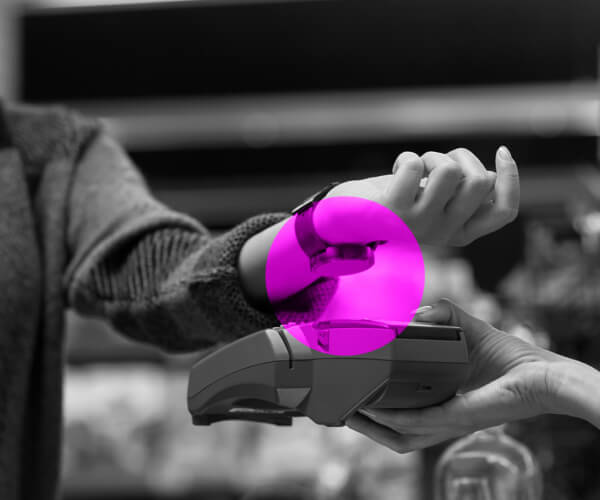From June 29 to July 1, the SFA Summer Fancy Food Show brought together thousands of brands, buyers, and packaging professionals at New York’s Javits Center this year to explore what’s shaping the future of food. From the rise of private labels to the evolution of premium foods, the show highlighted powerful shifts in food trends, changing consumer tastes and experiential expectations, as well as strategies to leverage these for both food manufacturers and retailers to uncover new growth opportunities.
Here are five key themes from the event:
1. Private Label is on the Rise

Private brands are no longer just value alternatives. They are a growing compliment to branded foods, as Whole Foods shared from a main stage presentation. The perception that private labels compete directly with established brands continues to build among many branded food players, especially as retailer-owned products improve in quality, design, and pricing. National brands are responding by doubling down on differentiation through strong storytelling, unique packaging, and shopper-first innovation.
2. Health-Conscious and Purpose-Led Products are the New Normal
Health is not a trend; it is now a requirement. Across the show floor, brands showcased clean ingredient labels, functional ingredients, and “better-for-you” claims that once lived on the periphery of grocery and specialty food aisles. These features are now central to mainstream and specialty products alike. This shift is influencing packaging, with a clear move toward designs that communicate transparency, nutritional benefits, and wellness cues at a glance.
3. Sustainability is Front and Center
 Sustainable packaging was a major focus at this year’s event, driven by both evolving consumer values and upcoming regulations like California’s 2032 compost-ability mandates. From biodegradable and recyclable materials to upcycled content and reduced-waste formats, brands are under pressure to create packaging that respects the planet without sacrificing performance or shelf impact. Sustainability was also reflected in the growing use of smart, traceable packaging, such as QR codes that detail sourcing, product journeys, and impact stories.
Sustainable packaging was a major focus at this year’s event, driven by both evolving consumer values and upcoming regulations like California’s 2032 compost-ability mandates. From biodegradable and recyclable materials to upcycled content and reduced-waste formats, brands are under pressure to create packaging that respects the planet without sacrificing performance or shelf impact. Sustainability was also reflected in the growing use of smart, traceable packaging, such as QR codes that detail sourcing, product journeys, and impact stories.
4. Premium Design is Evolving
Packaging design is becoming more emotional, artistic, and expressive. The show floor featured everything from sleek, minimalist bottles to nostalgic, retro-style labels and dopamine-inducing color palettes. Across categories, aesthetics are increasingly used to signal quality, evoke feeling, and tell brand stories. In the specialty food space, high design is expected. Consumers are drawn to packaging that reflects craftsmanship, cultural authenticity, or luxury appeal.
5. Speed to Market Is Critical
 Agility is now a competitive advantage. Brands are working harder than ever to reduce the time from concept to shelf, and packaging is a central part of that equation. Whether responding to consumer trends, seasonal moments, or retail opportunities, the pressure is on to move fast without sacrificing quality or impact.
Agility is now a competitive advantage. Brands are working harder than ever to reduce the time from concept to shelf, and packaging is a central part of that equation. Whether responding to consumer trends, seasonal moments, or retail opportunities, the pressure is on to move fast without sacrificing quality or impact.
This theme echoed throughout the show and aligns with a broader industry shift toward faster innovation cycles and smarter decision-making processes.
In Summary
The SFA Summer Fancy Food Show was a powerful reminder of how quickly the food and packaging landscape is changing. From growing private label competition to the expanding expectations around health, sustainability, and speed, brands today must navigate an increasingly complex set of demands. Packaging has never played a more strategic role in influencing shopper decisions, and it is clear that those who adapt quickly and creatively will come out on top.
Contact us today to learn how these trends and our AI-powered solutions can help you optimize your shopper marketing strategies and drive impactful business decisions.
THE AUTHOR
 Peter Cloutier is Director of Growth & Commercial Strategy at Behaviorally, helping to bring marketers the solutions they need to grow conversion to purchase, both in-store and online. Peter brings decades of experience in uncovering actionable consumer and shopper insights, with prior leadership roles at firms including ChaseDesign, Epsilon’s Commerce Agency, Catapult Marketing, and Ogilvy & Mather.
Peter Cloutier is Director of Growth & Commercial Strategy at Behaviorally, helping to bring marketers the solutions they need to grow conversion to purchase, both in-store and online. Peter brings decades of experience in uncovering actionable consumer and shopper insights, with prior leadership roles at firms including ChaseDesign, Epsilon’s Commerce Agency, Catapult Marketing, and Ogilvy & Mather.
